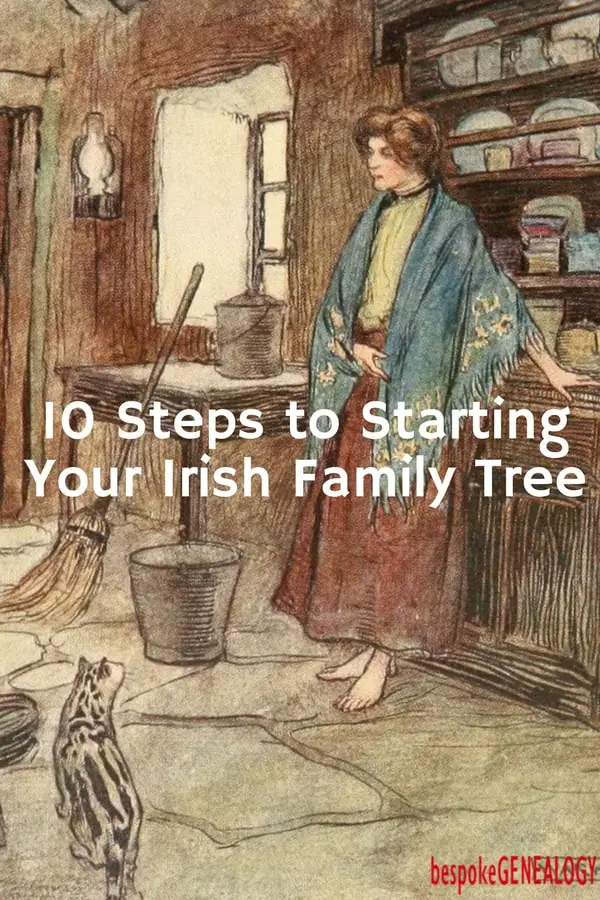
Finding your Irish ancestors can be a lot harder than finding those in other countries like the US, Canada, Australia or Great Britain. Many records were lost over the years, especially after the 1922 fire in the Dublin Public Record Office. I know that many people with Irish ancestry are reluctant to do any research because of this. Or you may have traced your family back to the ancestor who immigrated and all you know is that he/she was from Ireland. This post suggests 10 steps to take which should make it a bit easier to start your Irish family tree.
Many records in Ireland were lost, but the good news is that many still survive and some significant records are online and many are free. So it is possible to find your Irish roots. However, to stand the best chance of success, you need to know three things:
- The names of your immigrant ancestors
- The church they belonged to in Ireland
- The townland, parish or at least the county in Ireland they lived in
For more on Irish land divisions, see this page.
You might think that the first two are easy. However, in the late 1800s and early 1900s there was a lot of anti-Irish feeling in many countries and often immigrants changed their names to better fit in with the local communities. Irish immigrants also often joined another church on arrival to their new Country, so you can’t always assume that because your family belongs to a particular church now; your ancestors belonged to the same church in Ireland.
In my view, to stand the best chance of success of getting this information you need to thoroughly research your family in your own Country before you tackle Ireland. Many people (myself included) have started researching Irish records before they’ve got this information and have been unsuccessful initially. These steps should help you get started. The first four steps are for those of you just starting your family research, although there may still be some useful advice here if you have already done some work.
Step 1; read some Irish history
If you don’t know much about Irish history, I suggest reading up on it as it will help with an understanding of the reasons why your ancestors probably emigrated. This will also put your research into context. I recommend reading YOUR IRISH ANCESTORS: A Guide for the Family Historian by Ian Maxwell. The first half of the book is a great overview of Irish history over the last 400 years, especially during the time of British rule and looks at what everyday life was like for the majority of the population. The second half of the book looks at the surviving genealogical records in Ireland.
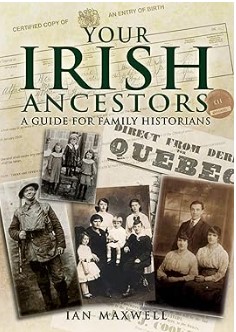
Click here to see it on Amazon.
Step 2; preparation and organization
For best results, any genealogy research, especially Irish research should be done systematically and methodically. Everything should be logged so that you don’t waste time in the future going over the same stuff again. I recommend keeping a proper research log. If you haven’t already done so, you could subscribe to Bespoke Genealogy (above) so that you can get a free research log template along with some other useful forms and charts.
Everything you find should be given a source citation so that you and future generations know exactly where a particular reference or document came from. There is a useful guide for citing sources on Family Search.
Once you’ve started to accumulate information, you’ll want to organize it all. The best way is to start a digital family tree. You have a few options here; you can start a free online tree with Family Search or one of the subscription sites like Find My Past or Ancestry However, I recommend getting a family tree software package and keeping it on your computer or tablet. Family tree software usually is much more flexible than online trees and has more options. There are also privacy issues with the online trees. You can always upload your tree later to a website if that’s what you want to do.
There are several software packages available; two of the most popular are Family Tree Maker and Roots Magic Both these packages can be synced with Ancestry online trees. If you don’t want to pay for software initially Gramps is a good free open source package. I started off using Gramps and it was perfectly adequate to begin with.
Step 3; write down all you know
Write down everything you know about your family. I recommend also drawing a simple family tree; include birth, marriage, death dates and maiden names if known. Or if you have an online tree or a software package, use these.
Step 4: talk to living relatives
If your parents, grandparents or aunts and uncles are still alive, talk to them find out what they know. For every new name that you can add to your tree, get as much information as you can from your relative. If possible, you need to try and find out:
- Full names
- Where deaths occurred, dates and places of burial
- Marriage dates and places
- Names of spouses including maiden names if applicable.
- Children’s names and places of birth
- Occupations and places of work
- Military service; which service, regiment, ship or squadron
- Schools and colleges attended
- If there are any newspaper clippings or photographs.
- If any family member has already done any family research.
- If they have any relevant documents that you can copy (even if it’s just with your phone)
If you know of any cousins or other relatives that you can contact, you should go through the same process with them.
Incidentally, a really good way of finding more cousins who may have already done some research into your family is to join Lost Cousins. Ideally, you need to have traced your family in your own Country back to the 1880 census in the US and the 1881 census in Canada, Scotland, England and Wales. There is more information about how it works here.
If you are really lucky, you will find a relative that has a family Bible containing useful information including the parish in Ireland the family came from.
Step 5; understand Irish name variants
Irish names often had several different spelling variations. Most immigrants were illiterate up to the early 20th century, so names were written down by officials as they were heard. Also, names were deliberately altered to become less Irish sounding. An example of this is my own name, McGowan, which has been anglicised to Gowan, Gow and Smith. A good source for finding variants is John Grenham’s website.
Step 6; thoroughly research your family in your own country
Before you start looking at Irish records, you need to thoroughly research your family in your own country and make sure no stone is left unturned as you may find a document that gives a clue to your ancestors’ origins in Ireland. This means looking at your direct ancestors and all the collateral lines, ie your cousins and their spouses families. This probably means looking at online records at the database sites as well as research in local archives if necessary.
Step 7; determine your ancestor’s arrival date
You need to find the date your ancestor arrived in your country to have the best chance of success with Irish research. The best online site for immigration records in the US is probably Ancestry. Note that many Irish immigrants into the US traveled via Canada in the late 19th century as the fare was cheaper.
Step 8; look for clusters
If you haven’t been able to determine where in Ireland your ancestor came using the steps above, then try to look for clusters on census forms (if possible). Often families emigrated with their friends and acquaintances from their local communities in Ireland and they settled down together in their new neighborhoods. So by tracing the family histories of the neighbours (with Irish names) of your ancestors, you may find some useful information.
Step 9; look for other documents
Records such as passenger lists, naturalization records, and passport applications often had the county as well as the country listed as the place of birth of a person. Some of the database sites have these records available online, so it’s worth checking them for your country/state:
Step 10; Start researching Irish records
Hopefully from steps 1-9 you will have been able to get enough information to start researching Irish records. For the next step, researching Irish records, see the Find your Irish Ancestry page which will take you to articles about the main record sets and how to access them.
See also the following pages:
FindMyPast has the best collection of online Irish records. You can sign up for a 14 day free trial here. An overview of their Irish records can be found here.
I also recommend reading Claire Santry’s excellent book, The Family Tree Irish Genealogy Guide.
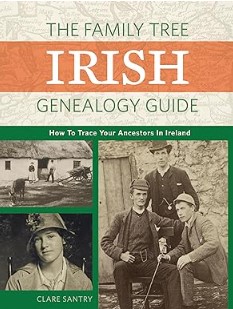
Click here to see it on Amazon
For many other Irish websites, see the Irish Genealogy Links page.
For more on finding your migrating ancestors, see: 10 Tips for finding your Emigrant Ancestors
And for more Irish genealogy articles, please visit the Ireland page here.
I hope this all helps. Good luck with your Irish research.
There are more genealogy books in the Resources section.
Please pin a pin to Pinterest:

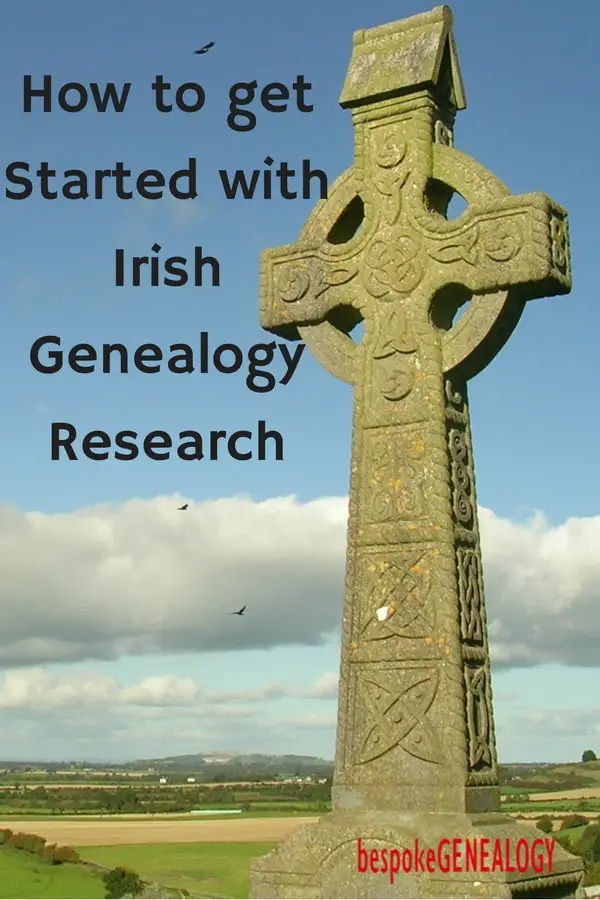

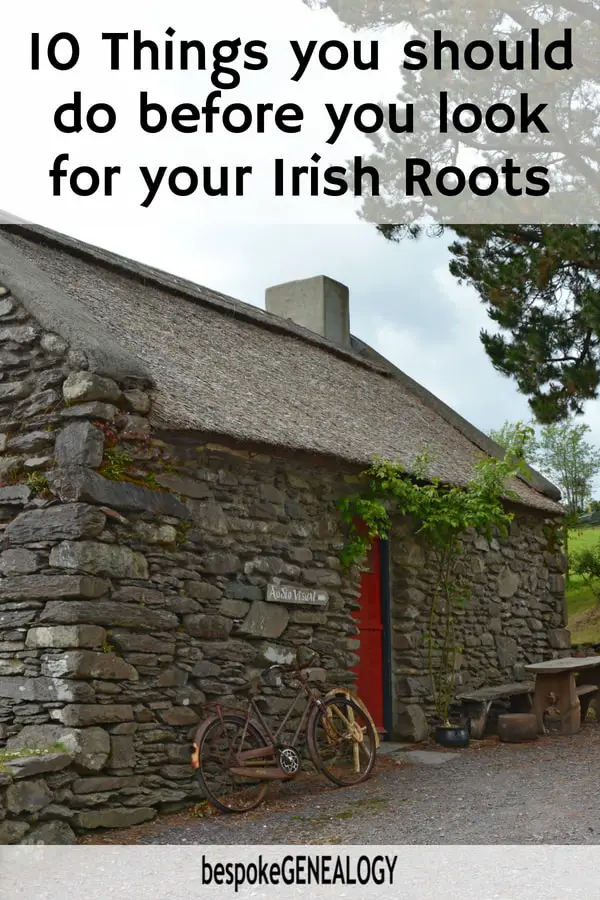
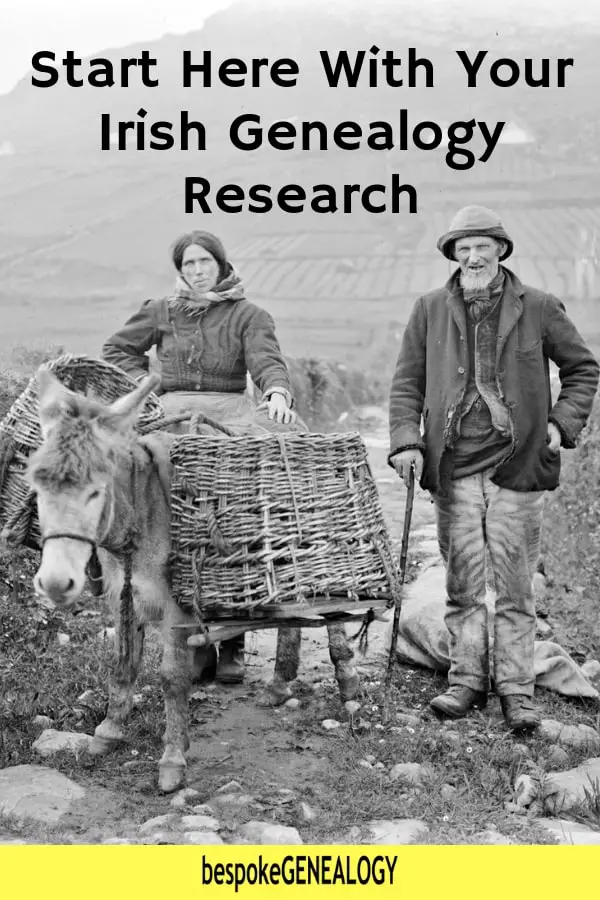
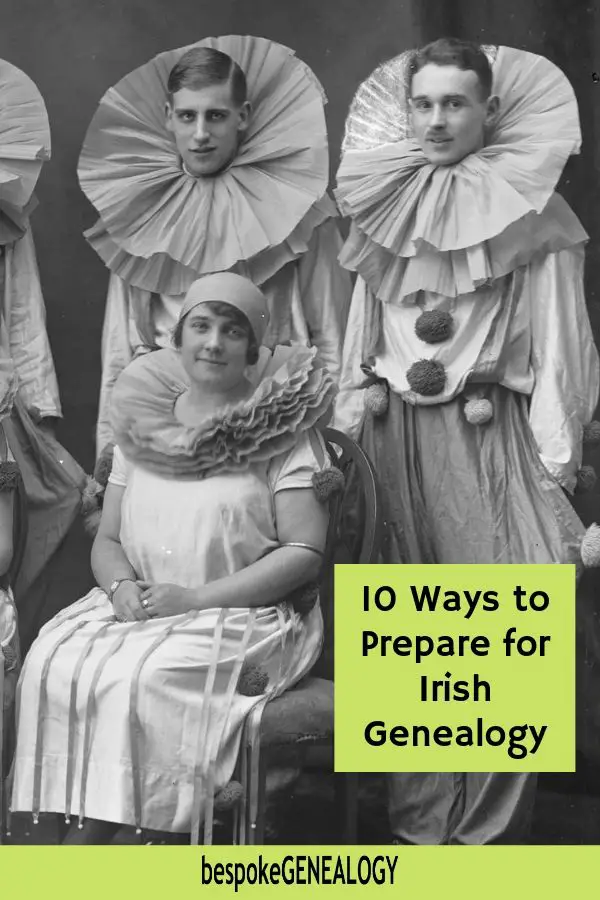
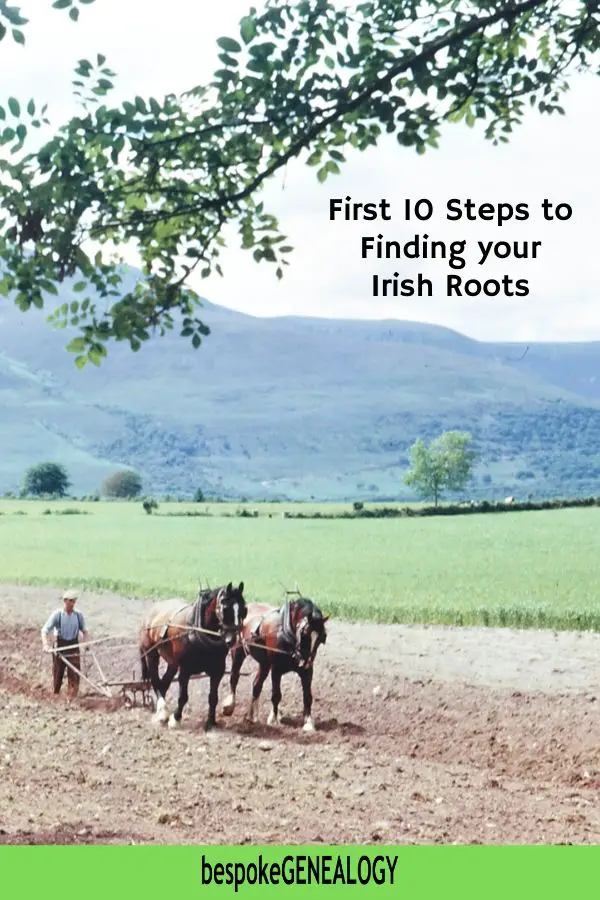
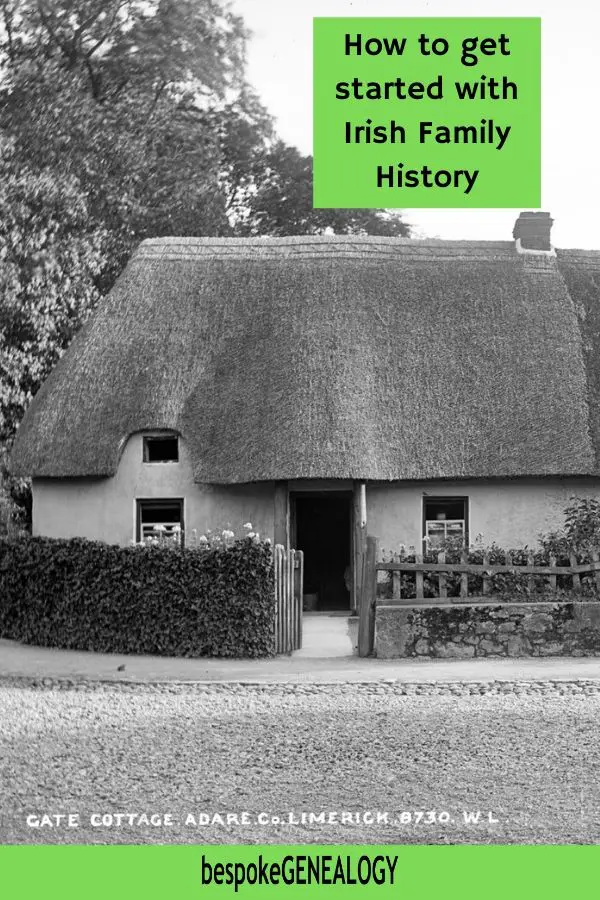
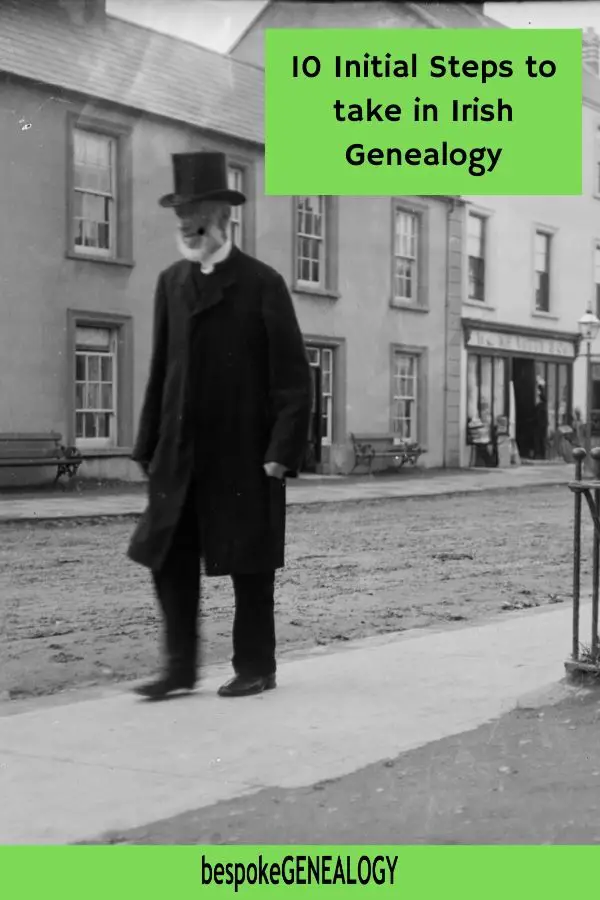
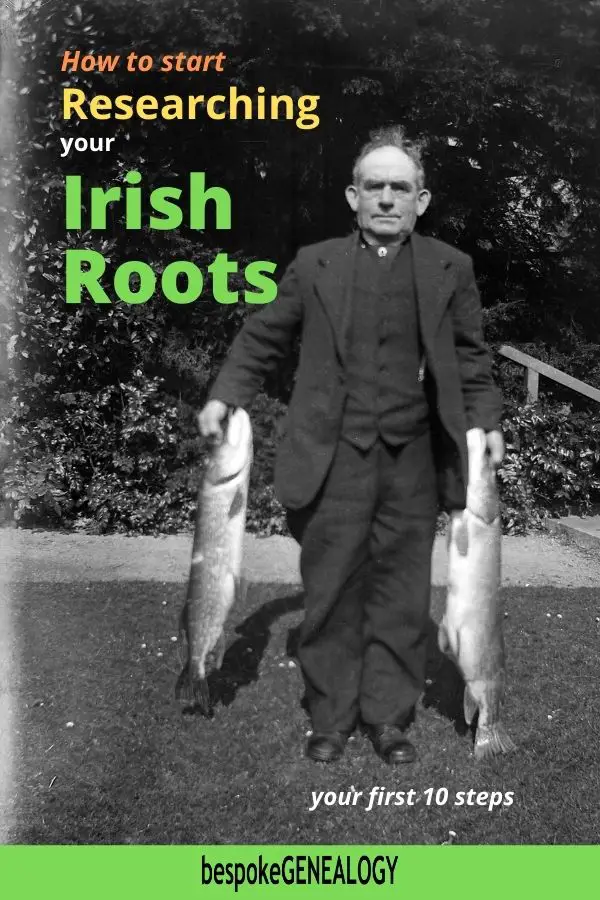
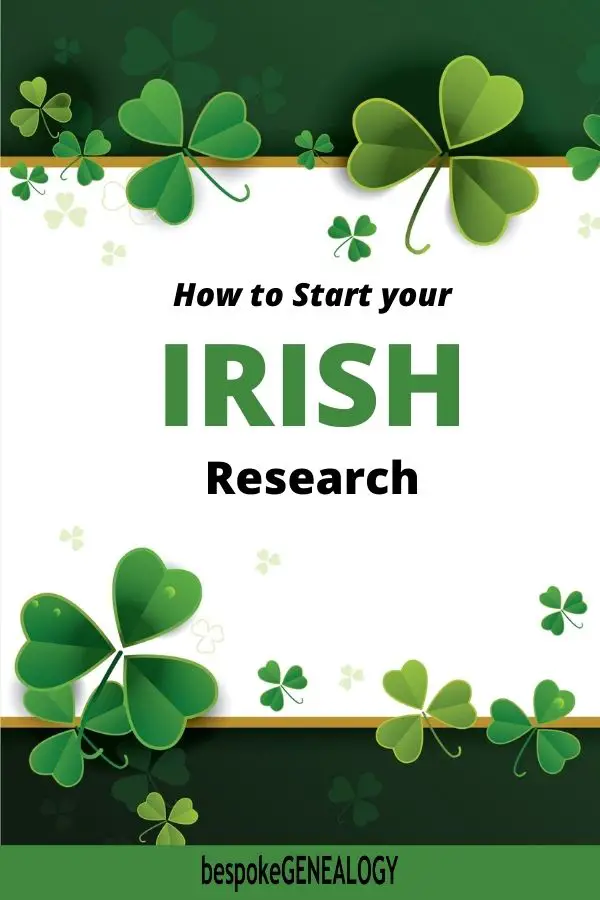
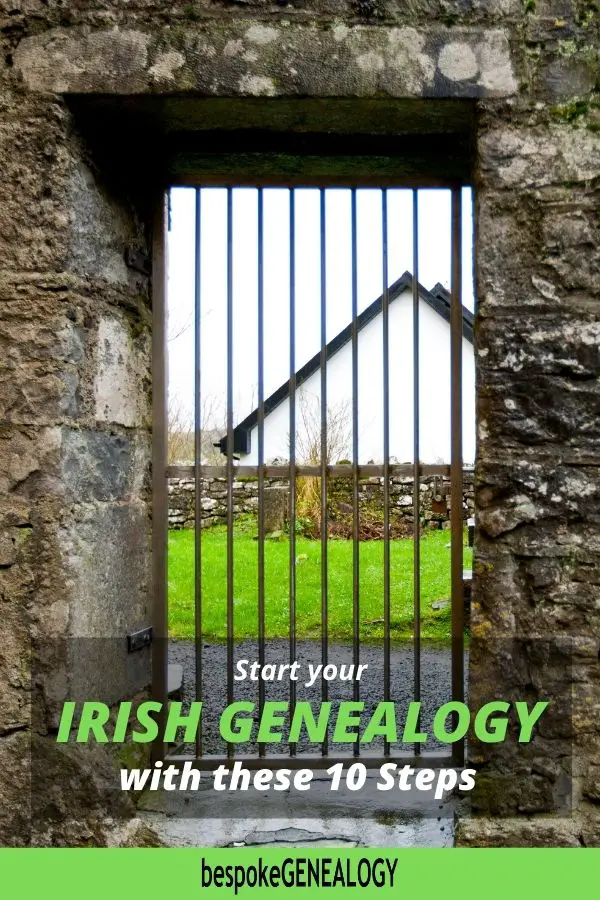
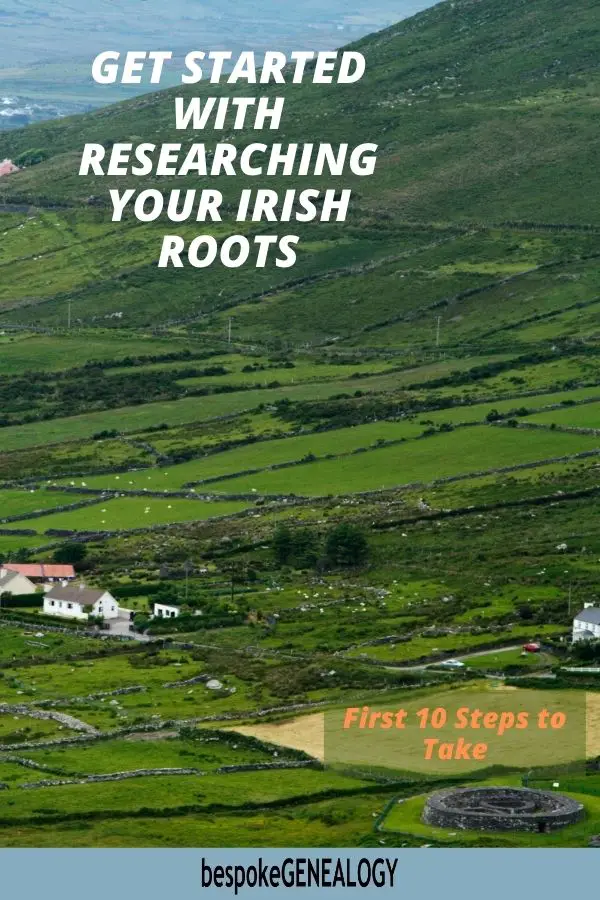
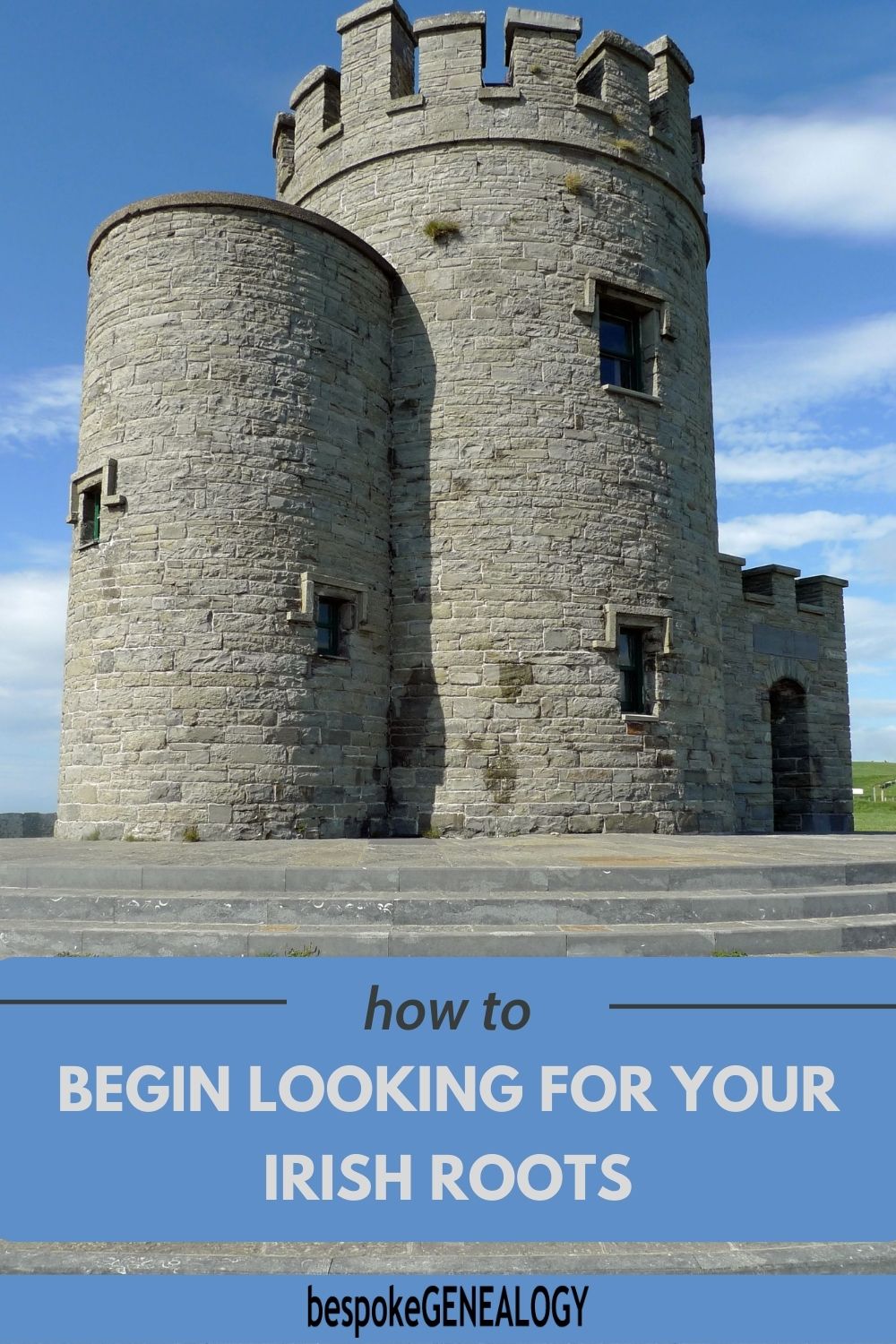

Thank you for sharing all this information – it is really appreciated.
You are very welcome!
Another way you haven’t mentioned is to have a DNA test. I was in Australia and after a special offer on Australian television I had a DNA test done by Ancestry.com. It came back that I was 100% Irish and even included a map of where my ancestors came from – I did know all that anyway as I was born and brought up in Ireland and had the sort of family who talked about the past. What came from this is that I was contacted by people in America, UK and Canada and actually found their ancestors through the fact that I had my DNA done. Just an idea!!!!
Thanks for the great comment Áine. DNA testing is a fantastic resource for family historians. However, I usually recommend that people who are starting their Irish research from scratch begin with building up at least a basic family tree using traditional methods and documents if possible first. Then when they take a DNA test they will have a better chance of working with matches to find common ancestors and extending their tree.
Hi, I’ve been working on my genealogy for several years off and on. On my paternal side my father’s father were Irish who emigrated to England and then to the US. [the rest is Polish, Hungarian and German – a real mixed bag]. I am just digging now into the Irish, frustrating because they all seem to be Thomas or Joseph, etc. etc. I think you have a lot of material here than will be helpful to me and I enjoyed the newsletter.
Keep me subscribed!
Many thanks,
Pippa Ryan [married to Ray Ryan and all his family were from Ireland]
Thanks Pippa! Good luck with your research.